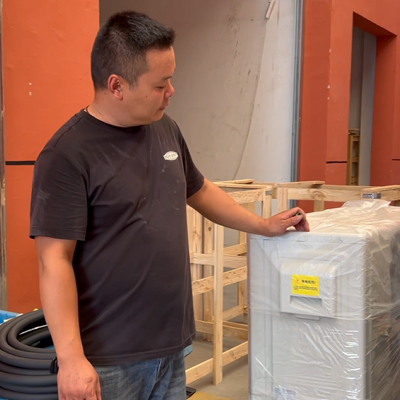Engineer Zhao, who is in charge of the decoration of a chain restaurant, encountered a problem when installing a cold storage unit in a new store last year — the unit shut down frequently just half a month after use. After inspection, the maintenance technician said that the problem lay in the installation process, and many merchants were prone to stepping into these 3 mistakes.
The first mistake is neglecting on-site ventilation. At that time, the construction team squeezed the unit into the corner of the back kitchen to save space, and there were also sundries piled around, blocking the heat dissipation port. The technician said that the unit needs good ventilation during operation, and at least 1.5 meters of heat dissipation space should be reserved; otherwise, the compressor will overheat and shut down frequently for protection. Engineer Zhao quickly cleaned up the surrounding sundries and readjusted the unit's position, and there was no more overheating problem afterwards.
The second mistake is irregular pipeline connection. During maintenance, it was found that the pipeline interface was not sealed tightly, and the leakage of refrigerant led to a decrease in cooling efficiency. It turned out that the construction team took a shortcut and did not use special sealant as required, only wrapping raw material tape. Engineer Zhao had to ask the workers to disassemble the pipeline again, treat the interface with refrigeration-specific sealant, and also conduct a pressure test. Only after confirming no leakage did he restart the unit.
The third mistake is unreasonable power supply configuration. In the early stage of the new store, a temporary power supply was used to test the unit, and the unstable voltage caused the compressor to start frequently. The technician reminded that the cold storage unit needs an independent circuit power supply, the voltage fluctuation should not exceed ±5%, and a voltage stabilizer must also be installed. Engineer Zhao quickly contacted an electrician to transform the circuit. After adding a voltage stabilizer, the unit started more smoothly, and the failure rate also decreased.
Now, when installing units in other stores, Engineer Zhao will emphasize these three points to the construction team in advance. He often says: "No matter how good the unit you choose is, it's useless if you step on pitfalls during installation. Only by avoiding these mistakes can the unit operate stably."


